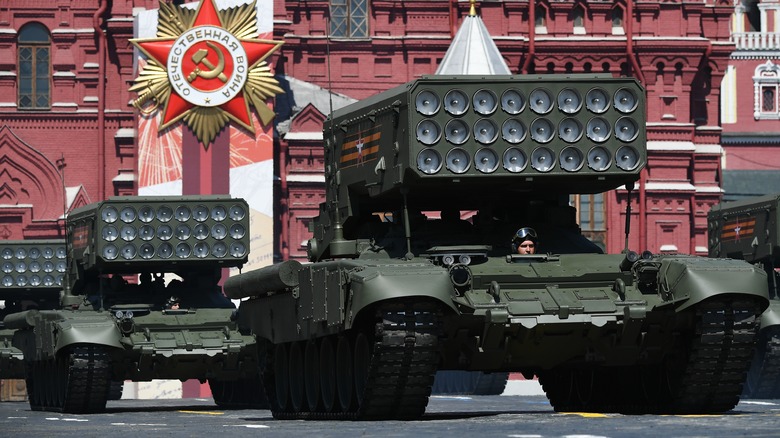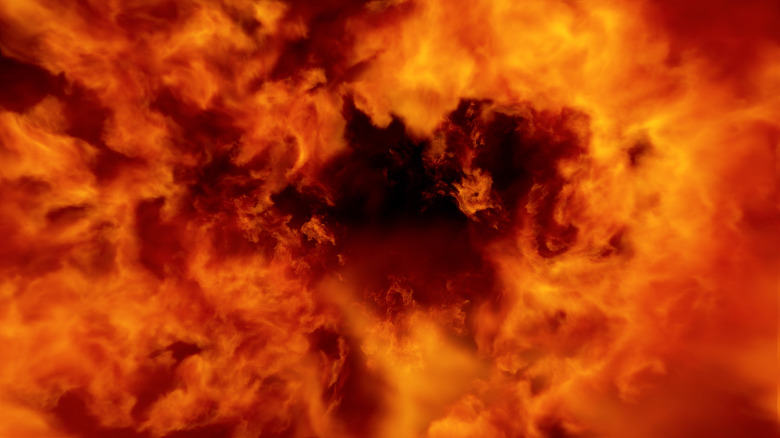What Is A Vacuum Bomb?
The Russian invasion of Ukraine brought the world's focus to eastern Europe as tragedy and violence unfolded. In one instance, a bombing that occurred at a Ukrainian army base on February 28, 2022, drew intense criticism after a Ukrainian official claimed that Russia had carried out the attack using a vacuum bomb. Using vacuum bombs against civilians is considered a war crime, and spokesperson Jen Psaki acknowledged the severity of the accusations if they turned out to be true. "I don't have any confirmation of that," Psaki said. "We have seen the reports. If that were true, it would potentially be a war crime."
Vacuum bombs have been used since the 1960s. Recently, the United States used them while fighting al-Qaeda in Afghanistan's rugged mountains. Dr. Marcus Hellyer of the Australian Strategic Policy Institute told The Guardian that vacuum bombs can cause massive devastation. "They are not illegal even though their effects can be pretty horrific, because of that effect of creating a vacuum and sucking the air out of the lungs of defenders," he said.
How does a vacuum bomb work?
Vacuum bombs are known for creating powerful, high-temperature explosions that can cause lots of damage. According to The Guardian, they are also known as aerosol bombs and/or fuel-air explosives and use the air around them to increase the intensity of the explosion they create.
Vacuum bombs work in stages. The bomb's first stage uses a charge to distribute a cloud of fine metal particles or some kind of carbon-based fuel. A second charge then ignites the fuel, which causes a fireball that sucks up oxygen — creating a vacuum — and causes a large shock wave. Vacuum bombs can last longer than traditional bombs and can get hot enough to vaporize victims.
According to Dr. Marcus Hellyer, there are many sizes of vacuum bombs, giving them the flexibility to be utilized in various combat scenarios, such as taking out tunnels and targeting the opposition's defensive forces.

